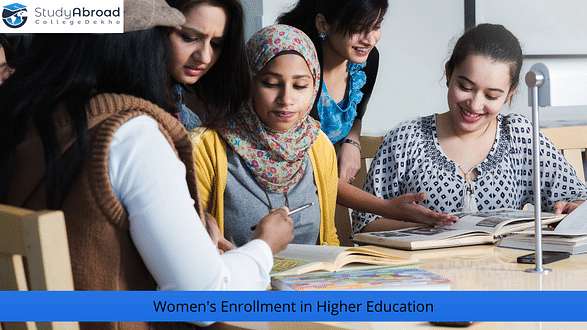According to the IIE's recent report, women constitute the majority of students pursuing higher education in 114 countries. The rise of women's enrollment has also increased their global academic mobility. However, despite the rise in women's participation in higher education, their academic mobility has still not increased at a fast pace.
Women's participation in higher education has been a concern globally. In most developing countries, women are not able to access higher education due to various socio-economic factors. This narrative is now eroding as the number of women in higher education has increased significantly over the last four decades. The rise in women's enrollment is attributed to the various changes in the world economy.
Also Read:Family Support Significant to Success of Indian Diaspora in the UK: Report
The main factor that influences women's decision to pursue higher education is their home country's socio-cultural constructs.
In traditional cultures, women are discouraged from pursuing certain academic programs such as math and science. This has caused a large number of females to study in other countries. Industrialisation and cultural shifts have caused many countries to experience higher levels of female education and labour force participation.
According to the All India Survey on Higher Education (AISHE's) 2019-20 report, the gross enrolment ratio of women students is 27.3%, which is higher than that of male students. This indicates that the number of female students taking up higher education has increased by18% from 2015-16 to 2019-20.
AlsoRead:Why India is 'Among the Biggest Source of International Students for Ukraine'
The gender parity index of India moved up to 1.01 in 2019-20, which is a significant improvement from the previous year's 1.00. The improvement in the gender gap index indicates that women's access to higher education has increased relative to that of male students.
The gender gap in the field of science and technology is still acute, with only around 30% of global researchers being women. According to the UNESCO Institute for Statistics, women in Indiaconstitute less than 15% of the country's researchers in the field of science and technology.
Also Read:New Initiatives in the Pipeline for Indian Students in the UK
Data also shows that the number of female students studying in the US has increased significantly. The Indian government is also working on closing the gender gap in the field of science and technology. One of its initiatives is the Indo-US fellowship, which provides Indian women with an opportunity to conduct research in the US.
Find & Apply toTop Universities AbroadNow!
Source: India Today

























